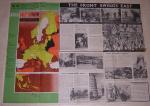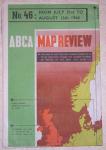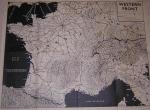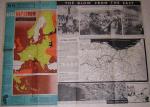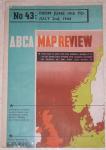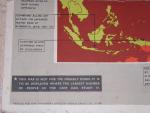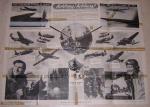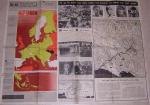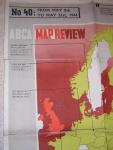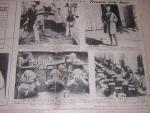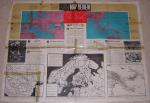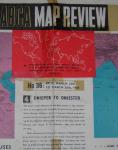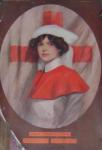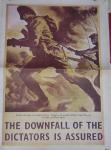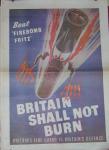-
Posts
3,595 -
Joined
-
Last visited
-
Days Won
1
Content Type
Profiles
Forums
Blogs
Gallery
Events
Store
Everything posted by JimZ
-
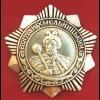
Some British propoganda posters
JimZ replied to JimZ's topic in Great Britain: Militaria: Badges, Uniforms & Equipment
-

Some British propoganda posters
JimZ replied to JimZ's topic in Great Britain: Militaria: Badges, Uniforms & Equipment
-

Some British propoganda posters
JimZ replied to JimZ's topic in Great Britain: Militaria: Badges, Uniforms & Equipment
-

Some British propoganda posters
JimZ replied to JimZ's topic in Great Britain: Militaria: Badges, Uniforms & Equipment
-

Some British propoganda posters
JimZ replied to JimZ's topic in Great Britain: Militaria: Badges, Uniforms & Equipment
-

Some British propoganda posters
JimZ replied to JimZ's topic in Great Britain: Militaria: Badges, Uniforms & Equipment
-

Some British propoganda posters
JimZ replied to JimZ's topic in Great Britain: Militaria: Badges, Uniforms & Equipment
-

Some British propoganda posters
JimZ replied to JimZ's topic in Great Britain: Militaria: Badges, Uniforms & Equipment
-

Some British propoganda posters
JimZ replied to JimZ's topic in Great Britain: Militaria: Badges, Uniforms & Equipment
-

Some British propoganda posters
JimZ replied to JimZ's topic in Great Britain: Militaria: Badges, Uniforms & Equipment
-

Some British propoganda posters
JimZ replied to JimZ's topic in Great Britain: Militaria: Badges, Uniforms & Equipment
-

Some British propoganda posters
JimZ replied to JimZ's topic in Great Britain: Militaria: Badges, Uniforms & Equipment
-

Some British propoganda posters
JimZ replied to JimZ's topic in Great Britain: Militaria: Badges, Uniforms & Equipment
-

Some British propoganda posters
JimZ replied to JimZ's topic in Great Britain: Militaria: Badges, Uniforms & Equipment
-

Some British propoganda posters
JimZ replied to JimZ's topic in Great Britain: Militaria: Badges, Uniforms & Equipment
-

Some British propoganda posters
JimZ replied to JimZ's topic in Great Britain: Militaria: Badges, Uniforms & Equipment
Thiis is a WW1 poster. Sadly it was damaged and is missing the bottom left hand cornor which someone had cut out. It read - "Its a long way to Tipperary, Its a long way to go. Its a long way to Tipperary, to the sweetest girl I know" Quite a sweet one actually. -

Some British propoganda posters
JimZ replied to JimZ's topic in Great Britain: Militaria: Badges, Uniforms & Equipment
-

Some British propoganda posters
JimZ replied to JimZ's topic in Great Britain: Militaria: Badges, Uniforms & Equipment
-

Some British propoganda posters
JimZ replied to JimZ's topic in Great Britain: Militaria: Badges, Uniforms & Equipment
-

Soviet Soviet & Eastern Block Quiz
JimZ replied to Christophe's topic in USSR: Soviet: Other Militaria
Amongst his list of dicoveries and inventions are: 1910: A mobile platform for aerodynamic experiments, mounted on the side of a train, running at 90 km/h on the Paris - Saint-Quentin route. Effectively, this gave him a wind tunnel; using smoke and a photographic camera of his own design, he was able to test the stability of designs for airplane wings. 1910: The Coandă-1910, the world's first thermojet aircraft (which crashed on its only demonstration). 1911: A two-engine, one-propeller airplane. 1911-1914 as technical director of Bristol Aeroplane Company, designed the Bristol-Coandă airplanes. 1914-1916: at Delaunay-Belleville, designed three more types of airplane, including the Coandă-1916, with two motors near the tail. He invented a new decorative material for use in construction, beton-bois; one prominent example of its use is the 1926 Palace of Culture, in Iaşi. 1926: Working in Romania, Coandă developed a device to detect liquids under ground, useful in petroleum prospecting. Shortly thereafter, in the Persian Gulf region, he designed a system for offshore oil drilling. Probably the most famous of Coandă's discoveries is the Coandă Effect. After the crash of the "Coandă-1910" airplane, Coandă observed that flames and incandescent gas emitted by the fire tended to remain close to the fuselage. After more than 20 years studying this phenomenon along with his colleagues, Coandă described what Albert Metral was later to name the "Coandă Effect." This effect has been utilized in many aeronautical inventions and is crucial to successful supersonic flight. Now that I read the last paragraph I realise I knew about this gentleman from too many hours in front of Discovery Channel Jim -

Soviet Soviet & Eastern Block Quiz
JimZ replied to Christophe's topic in USSR: Soviet: Other Militaria
Our Gentleman is Henri Coanda. Born in Bucharest, Coandă was the second child of a large family. His father was General Constantin Coandă, a mathematics professor at the National School of Power and Roads. His mother, Aida Danet, was the daughter of French physician Gustave Danet, and was born in Brittany. He was later to recall that even as a child he was fascinated by the miracle of wind. Coandă studied at the Petrache Poenaru Communal School in Bucharest, then (1896) at the Liceu Sf. Sava (Saint Sava National College). After three years (1899), his father, who desired a military career for him, had him transfer to the Military Lycee in Iaşi. He graduated from that institution in 1903 with the rank of sergeant major, and he continued his studies at the School of Artillery, Military, and Naval Engineering in Bucharest. Sent with an artillery regiment to Germany (1904), he enrolled in the Technische Hochschule in Charlottenburg, Berlin. Coandă graduated as an artillery officer, but he was more interested in the technical problems of flight. In 1905, he built a missile-airplane for the Romanian Army. He continued his studies (1907-1908) at the Montefiore Institute in Li?ge, Belgium, where he meets Gianni Caproni. In 1908 Coandă returned to Romania to serve as an active officer in the Second Artillery Regiment. However, his inventor's spirit did not comport well with military discipline; he solicited and obtained permission to leave the army, after which he took advantage of his renewed freedom to take a long automobile trip to Isfahan, Teheran, and Tibet. Upon his return in 1909, he travelled to Paris, where he enrolled in the newly founded ?cole Nationale Superieure d'Ingenieurs en Construction A?ronautique (now the ?cole Nationale Sup?rieure de l'A?ronautique et de l'Espace, also known as SUPAERO); one year later (1910) he graduated at the head of the first class of aeronautical engineers. With the support of engineer Gustave Eiffel and the mathematician, politician, and aeronautical pioneer Paul Painlev?, he began experimenting the aerodynamic techniques: one of this experiments was mounting a device on a train running at 90 km/h so he could analyse the aerodynamic behavior. Another experiment used a wind tunnel with smoke and an aerodynamical balance to profile wings to be used in designing aircraft. This led to the discovery of the aerodynamic effect now known as the Coandă Effect. In 1910, using the workshop of Gianni Caproni, he designed, built and piloted the first 'thermojet' powered aircraft, known as the Coandă-1910, which he demonstrated publicly at the second International Aeronautic Salon in Paris. The powerplant used a 4-cylinder piston engine to power a compressor, which fed to two burners for thrust, instead of using a propeller. It would be nearly 30-years until the next thermojet powered aircraft, the Campini Caproni CC.2. (See also Jet engine) At the airport of Issy-les-Moulineaux near Paris, Coandă lost control of the jet plane, which went off of the runway and caught fire. Fortunately, he escaped with just a good scare and some minor injuries to his face and hands. Around that time, Coandă abandoned his experiments due to a lack of interest and support on the part of the public and of scientific and engineering institutions. Between 1911 and 1914, he worked as technical director of Bristol Aeroplane Company in the UK, where he designed several airplanes known as Bristol-Coandă airplanes. In 1912 one of these planes won the first prize at the International Military Aviation Contest in UK. In 1915, he went again to France where, working during World War I for Delaunay-Belleville in Saint-Denis, he designed and built three different models of propeller airplane, including the Coandă-1916, with two propellers mounted close to the tail; this design was to be reprised in the "Caravelle" transport airplane, for which Coandă was a technical consultant. In the years between the wars, he continued traveling and inventing; inventions included the first jet-powered sleigh, and the first de luxe aerodynamic railroad train. In 1934 he was granted a French patent related to the Coandă Effect; in 1935, he used the same principle as the basis for a hovercraft called "Aerodina Lenticulara", which was very similar in shape to the flying saucers later developed by Avro Canada before being bought by USAF and become a classified project. In 1969, during the first years of the Ceauşescu era, he returned to spend his last days in his native Romania, where he served as director of the Institute for Scientific and Technical Creation (INCREST) and in 1971 reorganized, along with professor Elie Carafoli, the Department of Aeronautical Engineering of the Polytechnic University of Bucharest, spinning it off from the Department of Mechanical Engineering. Coandă died in Bucharest November 25, 1972 at the age of 86. Bucharest's Henri Coandă International Airport is named after him. http://en.wikipedia.org/wiki/Henri_Coanda -

British Webbing set
JimZ replied to JimZ's topic in Great Britain: Militaria: Badges, Uniforms & Equipment
Very interesting Kev! Thanks for taking the time to fill me in Jim -
I do not care much for Umalatove medals and although these have been discussed in other threads, why is a Lt Col. on active duty (I assume) wearing non official govenment awards on his uniform?? I do not understand!!! What next..... a young man working at McD and having received dangly shiny bits of metal is going to wear them on his uniform a few years later! I know this is an exagaration indeed.... Someone enlighten me please. Jim


